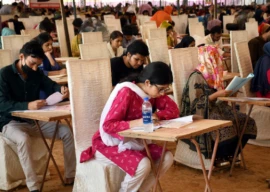
And of course, several quarters greeted the process with deep scepticism and continue to be sceptical about the durability of the delicate interaction. Doubts also surround the process because of the hitherto unexplained absence of the mercurial Taliban chief Mullah Omar. His whereabouts are unknown and that has sowed divisions between the Taliban field commanders and their political leadership ensconced either in Doha or Islamabad.
Viewed against this backdrop i.e., the simmering violence in parts of Afghanistan, fierce opposition to the Ghani-led peace process and widespread scepticism over the purposefulness of the talks, there is little doubt that this latest round of talks with the Afghan Taliban has unleashed a new, much more promising dynamic within the region.
Firstly, an embattled Ghani, assured by external stakeholders such as the US and China, has emerged as the great lone crusader in a minefield of odds. Singlehandedly, the physically frail president has fought off many enemies, including the majority of parliamentarians in the Woolasi Jirga, as well as most of his own security apparatus led by a hostile National Directorate of Security (NDS). He also fended off, and continues to do so, the Karzai legacy, which represents: a) Pakhtun nationalists; b) those Afghans critical of Pakistan; c) forces of the status quo which have thrived on conflict and would like to see hostilities continue for their narrow commercial interests; and d) those forces acting as instruments in the Pakistan-India proxy war.
Following stiff opposition by the NDS chief Rahmatullah Nabil to the counterterror cooperation deal with Pakistan, President Ghani moved swiftly to bring in his trusted aid Ajmal Abedi as the deputy director of the NDS. He also agreed to review the MoU text and thereby silenced much of the opposition.
But all this wouldn’t have been possible without external support. The US combined its military muscle with its financial leverage to put Ghani’s detractors in place. Without US support, the Afghan state would descend into political chaos and financial misery, was the message conveyed to the anti-Ghani lobby. This intervention delivered a severe blow to the cobweb that was being gradually spun around Ghani. US officials in Islamabad and Washington, particularly those dealing with the reconciliation process, had felt frustrated by the mindless noise many Afghans made over the NDS-ISI deal.
Secondly, Pakistan, practically led by the unflinching General Raheel Sharif, had staked a lot in laying bare many of its cards and went all out to prepare the ground for the talks. This unparalleled facilitation rubbed off a lot of criticism and scepticism over Pakistan’s role vis-a-vis Afghanistan.
Thirdly, in addition to their clout in both Pakistan and India, China and Russia apparently used the SCO membership, accorded to both at the Ufa summit in Russia, as a leverage to reconnect both South Asian rivals. Both China and the US, through their presence in the Murree talks, underwrote the Pakistani initiative and demonstrated that they meant business as far as the future of Afghanistan was concerned.
Fourth, the way external players rallied around Pakistan's efforts also underscored its criticality to the peace process in Afghanistan. The stakes for Islamabad have never been higher. While facing many internal wars, Pakistanis feared a precipitation in its challenges in case the unity government in Kabul crumbled and Ghani was ousted. The fact that the NDS helped in taking out two former TTP terrorists, Shahidullah Shahid and Hafiz Saeed Khan, from their hideouts in Ningarhar also signalled a possible unwinding of the cobweb that the NDS had spun around Pakistan through the TTP. In this regard, one would do well to remember the events of October 2013, when American marines snatched Latifullah Mehsud, an aide to Hakimullah Mehsud, from the spooks of the NDS and turned them over to Pakistan.
Lastly, the latest round of talks also underline that under the US-Chinese influence, the NDS might be willing to move for a better collective future. This may also neutralise the anti-Pakistan lobby within the NDS and the Afghan National Security Forces.

1726117332-0/Megan-Thee-Stallion-(1)1726117332-0-165x106.webp)

















COMMENTS (6)
Comments are moderated and generally will be posted if they are on-topic and not abusive.
For more information, please see our Comments FAQ